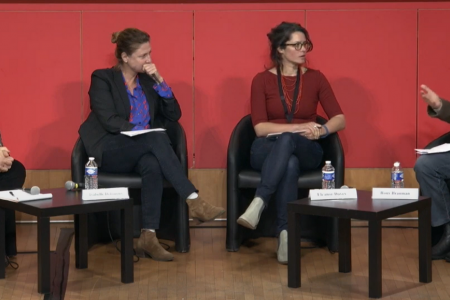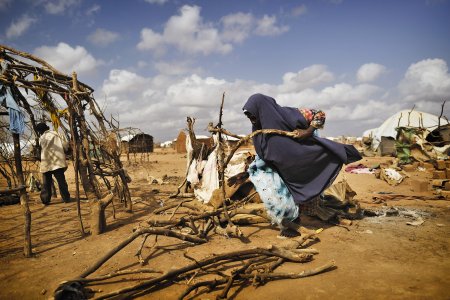
The Humanitarian Exhibition (1867-2016)
Bertrand Taithe
The Swiss editor Georg just published in open access a collection of articles edited by Sébastien Farré, Jean-François Fayet and Bertrand Taithe. The book covers much of the political and institutional periods in humanitarian history from the nineteenth century to the contemporary period, and engages with a variety of ways in which humanitarians have engaged with a wider public to explain their aims and tools. The book argues that the necessity to present, explain and demonstrate – the need to develop a pedagogical process through which activists may be able to make sense of their activism, share their enthusiasm and mobilise potential donors – is at the heart of humanitarianism as a social enterprise. Entrepreneurs of local charity had long built networks and commercial methods to raise the profile of their enterprises and funds, but humanitarians had a harder task. While charity at home could and did exhibit its activities very directly, philanthropists who claimed to affect distant groups or new groups needing help had to find ways of explaining their aims. To represent their work in wars, famines, epidemics or disasters entailed complex forms of communication – the most participative of which was that of exhibitions. Starting at a time when the media first appeared, exhibitions increasingly became a mode of representation enabling new forms of engagement. This book is devoted to this emergence of humanitarian exhibitions either within wider events or in their own right, as an attempt to focus attention and make sense of the aid humanitarians provided. The book argues that this exhibition process was central to the narration of the humanitarian project. It did not simply represent humanitarian work, it helped shape its essential identity and sense of purpose. Entail the development of new ways of thinking about needs and emergencies.
This volume is organised in three parts which cover three of the main objectives of humanitarian exhibitions over time: the staging and exhibiting of humanitarianism in its universalist context; the uses of exhibitions to represent humanitarian diplomacy and the development of humanitarian exhibitionary practices in the media as well as the development of humanitarian media genres. These three objectives ran alongside each other and do not represent stages in the history of humanitarian exhibitions.
The first part of this book is devoted to global events. Bertrand Taithe’s chapter is the starting point in this volume, it refers to the Paris exhibition of 1867. He considers how exhibitions participated in an effort to represent humanitarianism as a universal cause – illustrative of a “civilising process” and of its modernity. The chapter of Wendy Asquith interrogates the humanitarian objectives of League of Nations exhibitions of the 1930s at a time when humanitarianism was contested by Fascist, Nazi and Soviet ideologies. By tracing the representational strategies of League of Nations organisers she illustrates how images of humanity were poignantly displayed in a vain effort to maintain a political space for a universalism under siege. Peter Gatrell’s chapter shows how the UN sponsored World Refugee Year (1960) brought about myriad exhibitions – small and large, spontaneous and well-funded to bring attention to the plight refugees as priority humanitarian subjects. This chapter maps out how humanitarian initiatives arose within the context of growing globalisation of travels and consumption. Talita Cetinoglu ends this section through her study of the United Nations World Humanitarian Summit in 2016. She highlights how the host of the summit develop their own objectives in relation to humanitarian universalism.
The second main thematic section focuses on the exhibiting of humanitarian diplomacy. In this section the authors explore how humanitarian exhibitions framed competing forms of humanitarian diplomacy and aligned themselves with the reconfiguration of the humanitarian market before and after World War One. Julia Irwin’s paper is devoted to the camps and villages built by American organisations for displaced people in Italy and North East China following natural disasters at the beginning of the twentieth century. With American Red Cross financing and under the administration of the military, consular and diplomatic staff and voluntary organisations, these camps were regarded from their founding as exhibition spaces, welcoming visitors and eliciting photographic and visitors’ accounts. On the other side of the ideological divide, Soviet exhibitions and in more general terms the staging (kul’tpokaz) of the values and achievements of the Soviets were one of the means of legitimating the regime within and abroad in the aftermath of the civil war. In his chapter, Jean-François Fayet thus shows that despite their reluctance to embrace bourgeois philanthropy, the Russian Red Cross became a state sponsored agent in Soviet soft power. Patrick Bondallaz’s chapter is concerned with the communication strategy of the Secours aux Enfants de la Croix-Rouge Suisse (CRS-SAE), one of the organisations supporting Swiss foreign policy during World War Two. The Swiss situation during the conflict led the CRS-SAE to imagine sustainable funding strategies which could elicit the support of the entire population in their national humanitarian project. Sébastien Farré’s contribution to this volume shows and questions how the ICRC exhibited artefacts produced by inmates in prisoner camps. These were exhibited within the camps in the first instance and in museums or mobile train exhibitions which criss-crossed France and Switzerland.
The final section on humanitarian media exhibitions engages with different exhibition strategies. Marie–Luce Desgrandchamps shows, in this volume, how humanitarians’ autobiographical writings have shaped « a specific representation of humanitarian work in public imagination ». These writings gave a plot and meaning to memories and the recollection of emotions and these narratives have then, in turn, played a central role for humanitarian organisations. Some have become «foundational» texts and the best instance is the canonical account of Henri Dunant, Un Souvenir de Solferino (1862). Ana Carden–Coyne studied the different developments of the 1949 exhibition devoted to the Universal Human Right declaration organised by UNESCO in Paris. With the intention of educating the international community into these universal principles of the UN, the exhibition morphed into a book and album: Human Rights Album. Human Rights Exhibition Album. A halfway house between an exhibition catalogue and an exhibition kit, this album presented panels, photographies and texts around the declaration of 1948. It aimed to be a portable exhibition and to circulate worldwide. Luis Velasco–Pufleau builds on the work of Jacques Rancière on the sharing of the sensibilities to study a range of humanitarian songs that have left an imprint on public memory, notably 'We are the world' (1984) or 'Des Ricochets' (2012). His analysis of the texts, music and staging of these songs leads him to conclude that these songs simplify the humanitarian discourse to make it uniquely focused on emergency aid and never on social justice or the redistribution of wealth. Valérie Gorin discusses visual material and devotes her chapter to graphic reportage, in particular through the MSF engagement with this medium since the early 2000s. Cartoonists and scriptwriters, she argues, have played a role in re-imagining the representation of «victims» with greater sensitivity than is often found in mainstream media.
This collaborative book between US, British, French and Swiss academic used a wide range of archives and sources that few historians of humanitarianism have worked on: private papers, films, stamps, recordings, etc. This book offers a new perspective on humanitarian exhibitions and shows how humanitarians framed and were framed by their exhibitions in their many guises.
Contents
The Universal Humanitarian Exhibition
- Bertrand Taithe: ‘Encasing the word or the deeds? Imagining and Representing Humanitarian Work in Early Red Cross Displays and Exhibitions, 1867-1914’
- Wendy Asquith: ‘Constituting Communities of Humanitarian Feeling: The League of Nations, the United Nations and World Expos’
- Peter Gatrell: ‘World Refuge Year, 1959-1960 and the humanitarian exhibition’
- Talita Cetinoglu: ‘World Humanitarian Summit and the global display of humanitarianisms’
Exhibiting Humanitarian Diplomacy
- Julia Irwin: ‘Model villages amidst the ruins: Disaster refugee camps and settlements as functional sites of humanitarian exhibition’
- Jean-François Fayet: ‘La Croix-Rouge soviétique s’expose (à toutes les critiques)’
- Patrick Bondallaz: ‘S’exposer pour collecter : le Secours aux enfants de la Croix-Rouge suisse pendant la Seconde Guerre mondiale’
- Sébastien Farré: ‘« Du Train-Expo » à « Captivité… ». Exposer l’action de la Croix-Rouge durant la Deuxième Guerre mondiale’
The Humanitarian Media Exhibition
- Ana Carden-Coyne: ‘« No Laboratory of Illusions »: UNESCO’s Human Rights Exhibition and Album (1949-1951)’
- Marie-Luce Desgrandchamps: ‘Médecins et délégués en récit : évolution, promotion et représentation du travail humanitaire (1935-2012)’
- Luis Velasco-Pufleau: ‘Quand les célébrités s’exhibent : régimes de visibilités et abandon de la justice sociale dans les chansons humanitaires’
- Valérie Gorin: ‘L’humanitaire en bulles : les Médecins Sans Frontières dans la bande dessinée (2003-2019)’
To cite this content :
Bertrand Taithe, “The Humanitarian Exhibition (1867-2016)”, 16 mai 2022, URL : https://msf-crash.org/en/blog/humanitarian-actors-and-practices/humanitarian-exhibition-1867-2016
If you would like to comment on this article, you can find us on social media or contact us here:
Contribute



Add new comment